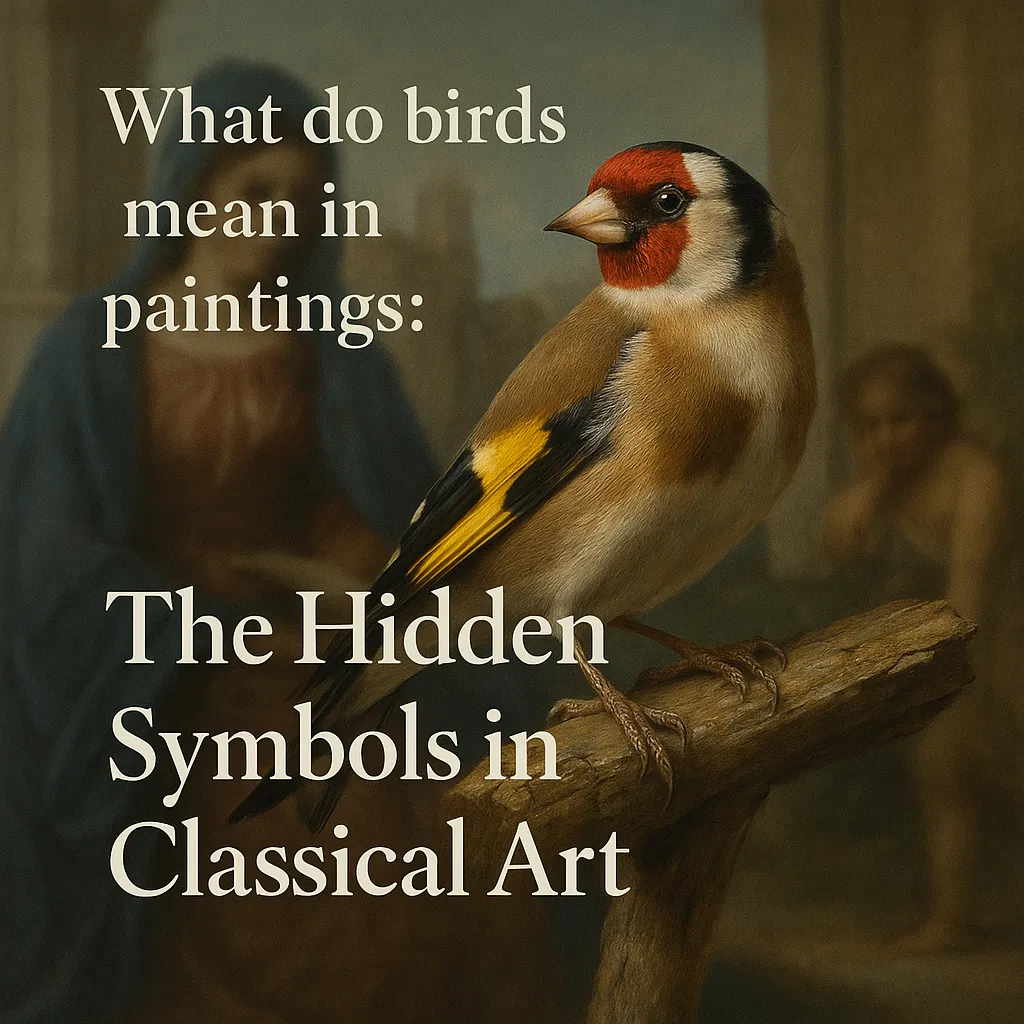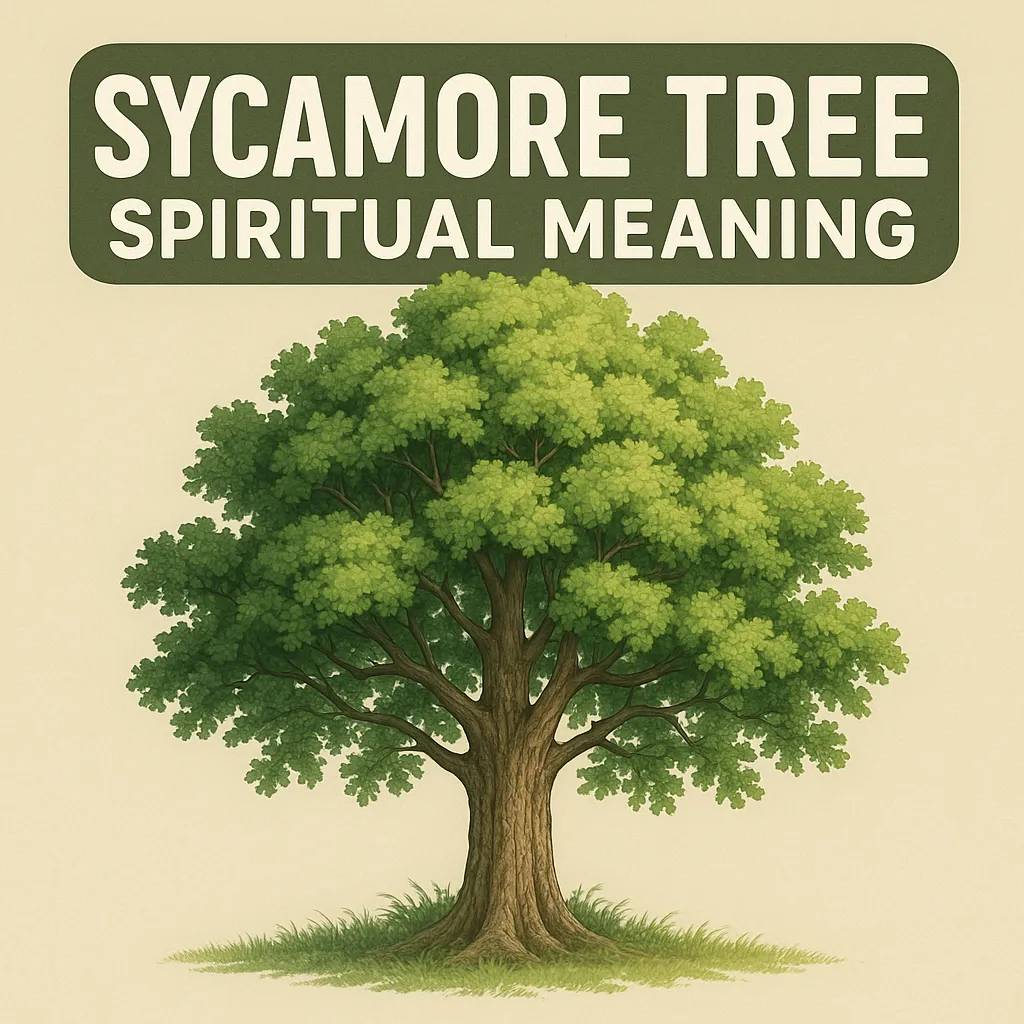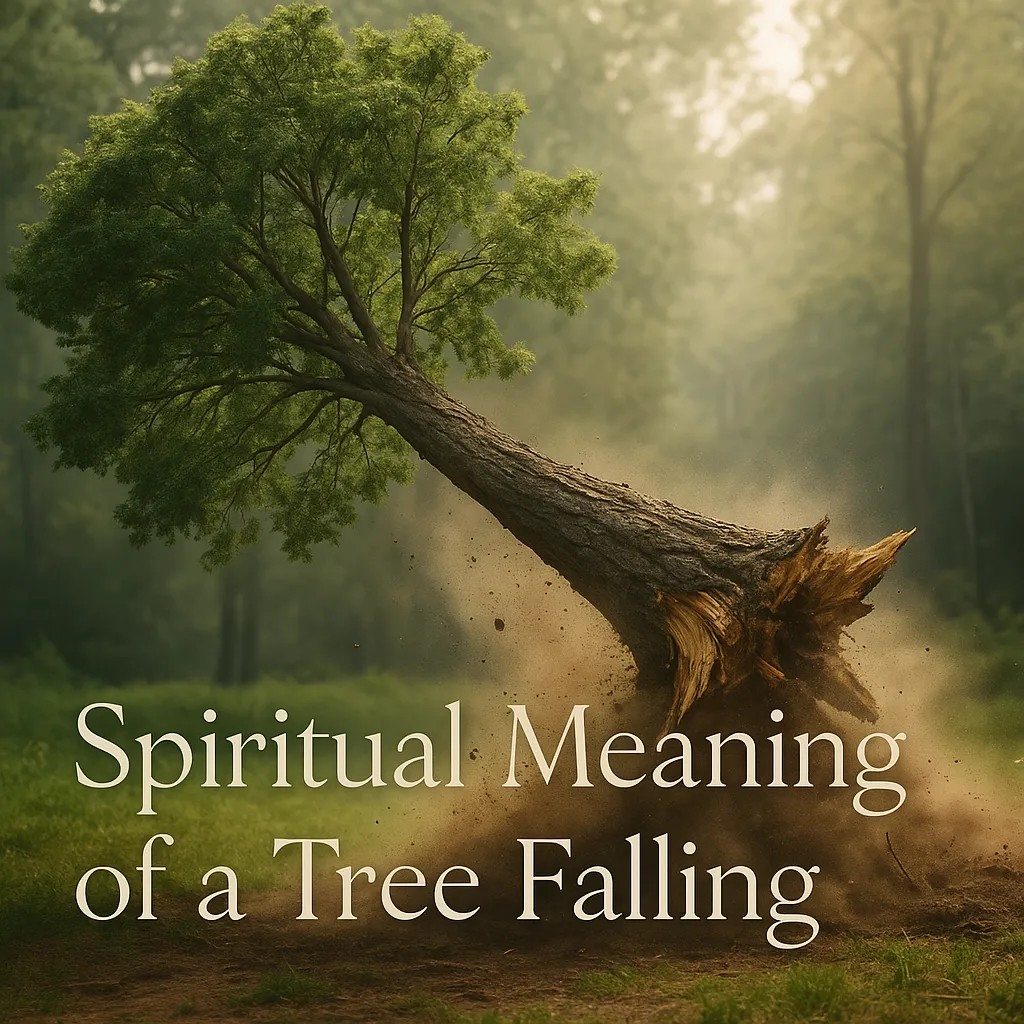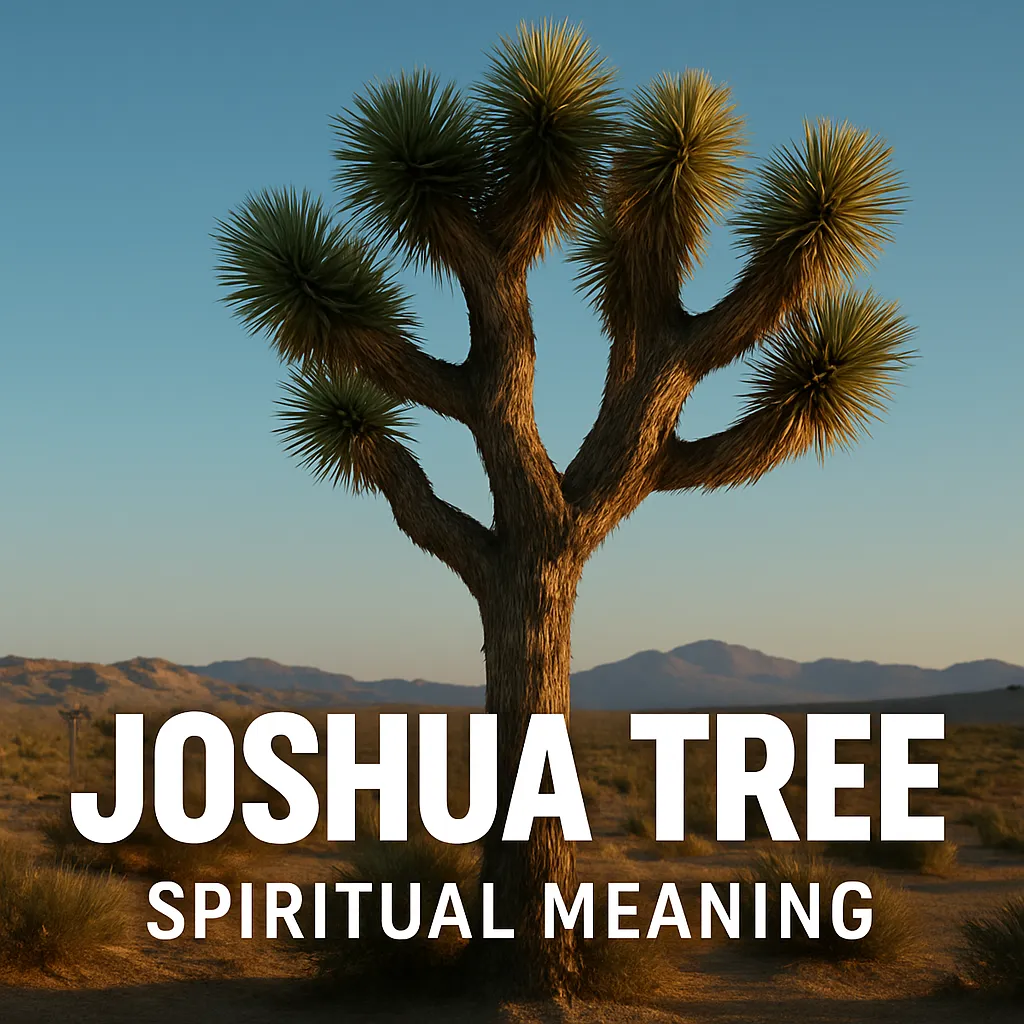Standing before a Renaissance masterpiece, your eyes are drawn to a small bird perched on a flowering branch in the corner of the canvas. Though seemingly insignificant, this avian detail was carefully placed by the artist as a doorway to deeper meaning. Throughout human history, artists have woven birds into their visual narratives as symbols of the divine, messengers between worlds, and reflections of our spiritual aspirations. What do birds mean in paintings? They represent far more than mere decorative elements—they embody freedom, transcendence, and sacred connections that transcend cultural boundaries.
From the falcon-headed Horus in ancient Egyptian art to the Holy Spirit dove in Christian iconography, birds have served as a universal symbolic language that speaks directly to our souls. By understanding these feathered messengers, we unlock hidden dimensions within artwork spanning millennia, deepening both our appreciation of artistic tradition and our connection to timeless spiritual wisdom.
Table of Contents
- 1 Key Takeaways
- 2 The Ancient Language of Feathers: Birds in Early Art
- 3 Birds as Divine Messengers in Religious Art
- 4 Bird Symbolism Across Cultural Traditions
- 5 The Evolution of Bird Symbolism Through Art History
- 6 The Psychological Dimension: Jungian Interpretations
- 7 Reading the Painted Feathers: How to Interpret Birds in Art
- 8 Famous Paintings and Their Avian Messengers
- 9 Meditative Practice: Connecting with Bird Symbolism in Art
- 10 The Spiritual Practice of Birdwatching in Art
- 11 Final Reflections: The Timeless Message of Wings
- 12 Suggested Artwork to Explore
- 13 FAQ
- 14 Sources
Key Takeaways
- Birds in artwork often symbolize divine messengers connecting the earthly and spiritual realms across virtually all cultural traditions.
- Specific bird species carry distinct symbolic meanings—doves represent peace and the Holy Spirit, while eagles symbolize power and transcendence.
- Medieval and Renaissance painters used bird imagery as a sophisticated visual language that communicated theological and philosophical concepts to viewers.
- Understanding bird symbolism in paintings allows for a deeper emotional and spiritual connection with artwork spanning from prehistoric cave art to contemporary pieces.
- Bird imagery in art reflects humanity’s universal spiritual yearning for freedom, transcendence, and connection with the divine.
The Ancient Language of Feathers: Birds in Early Art
Long before written language, humans were capturing avian forms on cave walls and rock faces. In the flickering torchlight of France’s Lascaux Caves, birds soar alongside other animals in what many scholars believe represents early shamanic practices and spiritual worldviews. These 15,000-year-old paintings suggest that our ancestors recognized something special about winged creatures—their ability to traverse both earth and sky made them natural mediators between realms.
In ancient Egypt, bird symbolism reached extraordinary sophistication. The falcon-headed god Horus watched over pharaohs and embodied divine protection, while the ba—depicted as a human-headed bird—represented the soul’s journey after death. This connection between birds and the soul appears repeatedly across cultures, suggesting a deep intuitive understanding of birds as spiritual messengers bridging visible and invisible worlds.
Mesopotamian civilizations similarly embedded birds with cosmic significance. The Anzu bird of Sumerian mythology guarded the throne of the sky god Enlil, while in Babylonian art, birds often accompanied depictions of Ishtar, goddess of love and war. These early artistic traditions established symbolic foundations that would influence religious iconography for millennia to come.
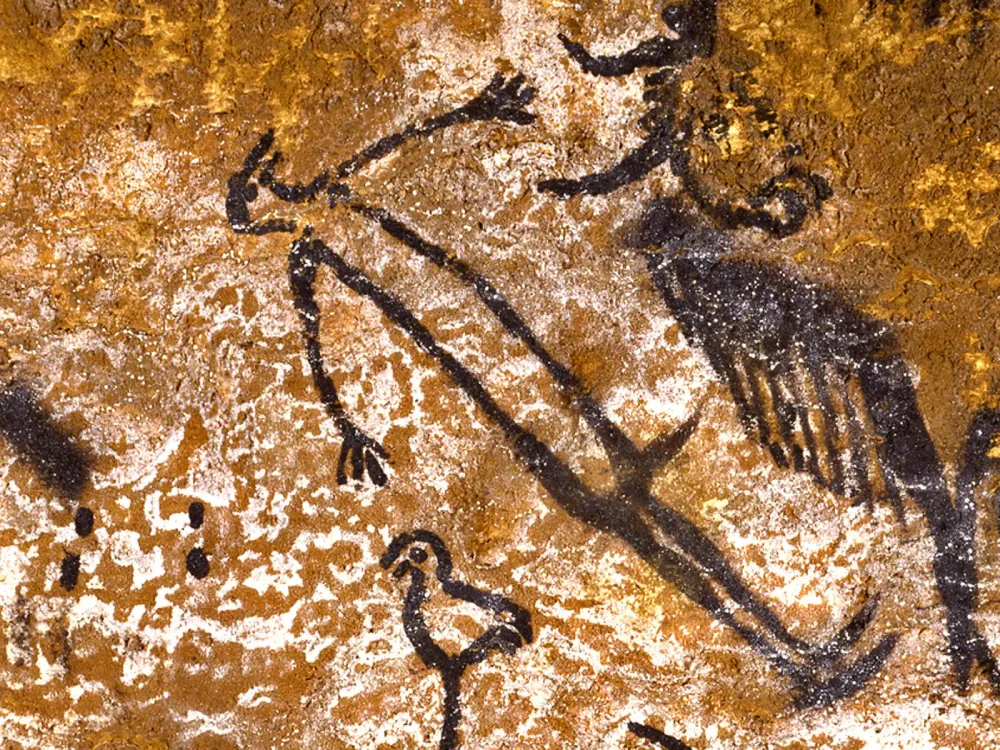
Bird-Human Hybrids and Shamanic Art
Perhaps most intriguing are prehistoric depictions of bird-human hybrid figures found across continents. From European cave art to Australian Aboriginal rock paintings, these therianthropic (part-human, part-animal) beings suggest early spiritual practices involving shamanic transformation. The “Bird-Man” of Lascaux and the similar figure in the Shaft Scene suggest rituals where shamans metaphorically took on avian attributes to journey between worlds.
These early representations laid groundwork for later religious iconography, including angels with their human forms and bird-like wings. The symbolism suggests that humanity has long recognized birds as creatures existing between the ordinary and the divine realms—a belief that continues to resonate in contemporary spiritual practices.
Birds as Divine Messengers in Religious Art
Few symbols are as immediately recognizable in Western religious art as the dove of the Holy Spirit. From Byzantine mosaics to Renaissance masterpieces, the pure white dove with outstretched wings appears at pivotal moments in Christian narrative—hovering above Christ during his baptism in the Jordan River or descending upon the apostles at Pentecost. This divine messenger makes the invisible presence of God visible to human eyes.
The peacock, with its resplendent tail and “all-seeing” pattern of eyes, became a powerful symbol of immortality and resurrection in early Christian art. According to medieval bestiaries, peacock flesh was believed to be incorruptible, making it a natural symbol for Christ’s resurrection. You’ll find these magnificent birds adorning early Christian catacombs, Byzantine church mosaics, and medieval manuscript illuminations.
Eagles, with their soaring flight and piercing gaze, symbolize spiritual vision, ascension, and divine power across traditions. In Christian iconography, the eagle represents St. John the Evangelist and his visionary Gospel. In imperial contexts, from Rome to Byzantium and beyond, eagles embodied earthly and heavenly authority simultaneously—a dual nature that made them powerful symbols for rulers claiming divine right.
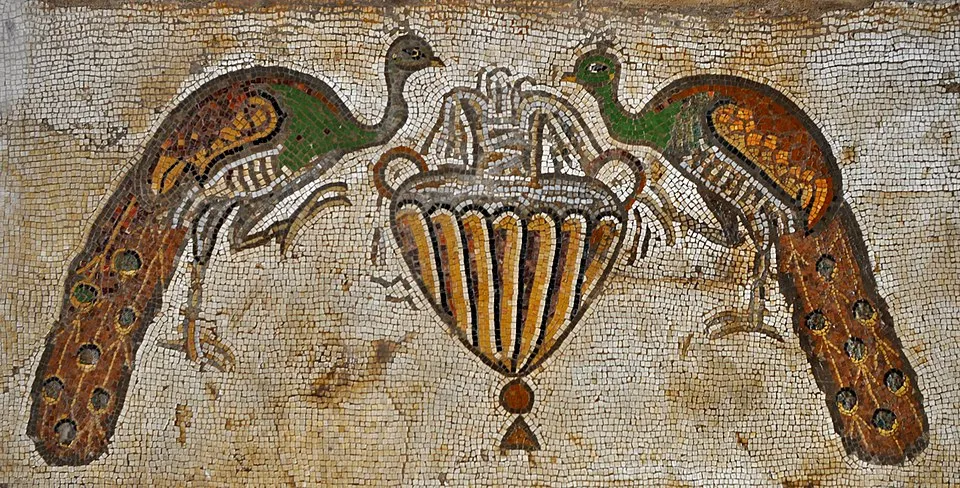
The Dove: From Noah to Pentecost
The dove’s journey through Christian art begins with Noah’s flood, where this unassuming bird returns with an olive branch—a message of peace and divine reconciliation. This narrative, depicted countless times across centuries, established the dove’s association with peace that continues in secular contexts today.
In Annunciation scenes, where the angel Gabriel announces to Mary that she will bear the Christ child, the dove often appears descending on rays of light—representing the Holy Spirit’s role in the Incarnation. Artists like Fra Angelico, Leonardo da Vinci, and countless others developed sophisticated visual vocabularies for depicting this divine presence through the simple form of a bird.
The Baptism of Christ and Pentecost scenes similarly feature the dove in positions of spiritual significance—moments when heaven touches earth. By understanding these contextual meanings, we can appreciate how a simple bird became a powerful symbol of divine presence that could be understood even by illiterate medieval viewers.
Birds of Paradise and the Soul’s Journey
Across traditions, birds have represented the human soul’s journey toward spiritual liberation. In Christian art, small songbirds often appear in scenes of Paradise, while souls might be depicted as birds flying upward from the mouths of the dying. This imagery draws on ancient Egyptian traditions of the ba and reflects humanity’s universal yearning for transcendence.
Medieval manuscript illuminations frequently show souls as small birds carried by angels to heaven, while Renaissance paintings might feature subtle bird imagery to suggest spiritual dimensions within seemingly mundane scenes. Jan van Eyck’s “Madonna in the Church” includes a small goldfinch—a bird associated with Christ’s passion due to its red markings and fondness for thistles—creating layers of theological meaning within a seemingly simple devotional painting.
Bird Symbolism Across Cultural Traditions
When we expand our view beyond Western traditions, we discover fascinating parallels and contrasts in how birds appear in global art. In Chinese painting, cranes symbolize longevity and wisdom, often appearing in landscapes alongside immortals or sages. The crane’s association with long life made it a popular motif in art intended as gifts for birthdays and other auspicious occasions.
Japanese artistic traditions similarly revere the crane, but also celebrate other birds in their distinctive aesthetic traditions. The graceful, minimalist brush paintings of the Zen tradition often feature birds with just a few essential strokes, capturing their spiritual essence rather than detailed physical appearance.
Hindu traditions feature Garuda, the eagle-like mount of Lord Vishnu, representing divine protection and spiritual aspiration. In temple sculptures and paintings, Garuda appears with hybrid human-bird form, often shown vanquishing serpents—symbolizing the triumph of spirit over material attachment.
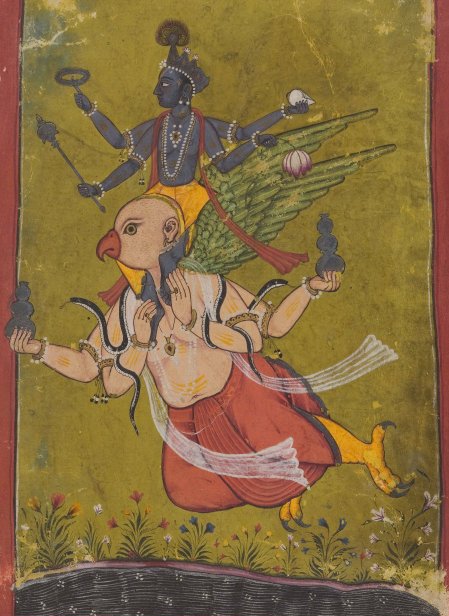
African spiritual traditions across the continent feature rich bird symbolism in their visual arts. In Yoruba tradition, birds often represent the messenger spirits between the visible world and the realm of ancestors and orishas. Tingatinga paintings from Tanzania frequently feature colorful birds as central subjects, connecting viewers to both natural and spiritual worlds.
Indigenous American traditions similarly recognize birds as spiritually significant beings. In Pueblo pottery, Hopi kachina figures, and Northwest Coast totem poles, specific birds appear as clan symbols, spiritual helpers, and embodiments of natural forces. The thunderbird, with its ability to control weather, appears in artwork from numerous traditions as a powerful supernatural being.
The Spiritual Significance of Specific Birds
Eagles, with their commanding presence and impressive hunting abilities, symbolize power, divine vision, and leadership across cultures. From the Roman Empire’s standards to the Great Seal of the United States, eagles embody authority and transcendence simultaneously. In Native American traditions, eagle feathers are sacred objects, and in Christian art, the eagle represents St. John’s visionary perspective.
Owls carry fascinating contradictions in their symbolism. In Western medieval art, they often represented darkness, heresy, or spiritual blindness—appearing in Hieronymus Bosch’s works as warnings against sin. Yet in Greek tradition, the owl accompanied Athena, goddess of wisdom. This duality reflects the owl’s liminal nature as a creature of both darkness and insight.
Cranes appear throughout Asian art traditions as symbols of longevity, peace, and good fortune. In Japanese folktales and art, cranes are said to live a thousand years, and the practice of folding origami cranes became associated with wishes for healing and peace, particularly after World War II.
Peacocks blend beauty and spiritual significance across traditions. In Byzantine and early Christian art, they symbolized immortality, while in Hindu traditions, they’re associated with Kartikeya and Krishna. The “thousand eyes” of the peacock’s tail suggested omniscience and spiritual vigilance.
Ravens and crows, often misunderstood as merely ominous, carry rich symbolic associations with intelligence, prophecy, and transformation. In Norse mythology, Odin’s ravens Huginn and Muninn (thought and memory) appear in Viking art. Native American traditions often portray Raven as a powerful creator and trickster figure, while in Celtic traditions, crows connect to the goddess Morrigan and the realm of the dead.
The Evolution of Bird Symbolism Through Art History
As we trace bird imagery through Western art history, we see both continuity and transformation. Medieval artists working within religious frameworks used birds as part of a complex symbolic system, where viewers understood these winged messengers as carriers of theological meaning. Manuscripts like the Aberdeen Bestiary codified bird symbolism, creating a visual vocabulary that artists could draw upon.
Renaissance masters expanded this symbolism while grounding it in more naturalistic observation. Jan van Eyck’s meticulous renderings of goldfinches and other birds in Madonna paintings maintained their spiritual significance while showcasing his technical virtuosity. Similarly, Botticelli’s “Primavera” features precisely observed birds alongside mythological figures, creating a harmonious synthesis of natural and spiritual realms.
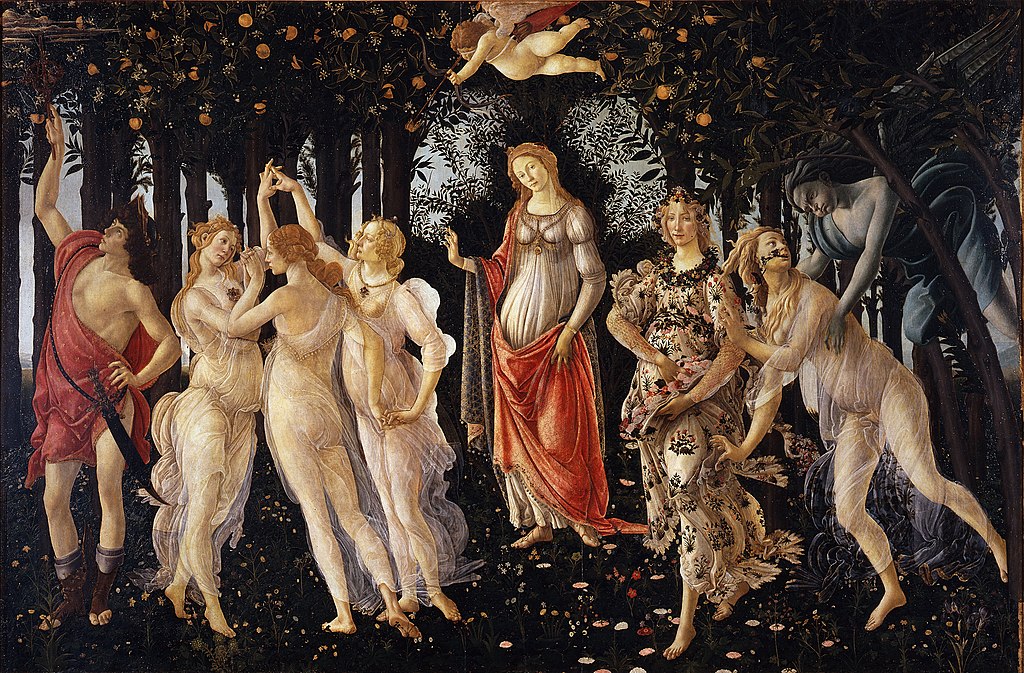
The Baroque period saw birds serving both symbolic and decorative functions. Dutch still-life paintings might include exotic birds as symbols of wealth and global trade, while also referencing traditional spiritual meanings. As we move toward Impressionism, artists like Monet captured birds with loose brushwork that emphasized light and atmosphere over symbolic content.
Modern and contemporary artists have reinvented bird symbolism for new contexts. Max Ernst’s bird-human alter ego “Loplop” explored psychological dimensions, while Frida Kahlo used birds in her self-portraits to express aspects of her emotional and physical experience. Today, artists continue to draw on this rich symbolic tradition while addressing contemporary concerns like environmental conservation and spiritual seeking in a technological age.
Medieval Manuscripts and Bestiaries
Medieval bestiaries—illustrated encyclopedias of animals both real and imaginary—played a crucial role in codifying bird symbolism. These texts combined observation, legend, and spiritual interpretation, creating a symbolic framework that influenced centuries of artistic production.
The Aberdeen Bestiary (c. 1200) describes the pelican piercing its own breast to feed its young with blood—interpreted as a symbol of Christ’s sacrifice. This image appeared countless times in church decorations, manuscripts, and devotional objects. Similarly, the phoenix’s legendary rebirth from ashes became a powerful resurrection symbol, while the eagle’s supposed habit of flying toward the sun and then plunging into water represented baptismal renewal.
Illuminated manuscripts from Books of Hours to Psalters integrated these bird symbols into religious narratives, using them as visual shorthand for complex theological concepts. By understanding these encoded meanings, modern viewers can decode layers of significance that would have been immediately apparent to medieval audiences.
Renaissance Masterworks: Hidden Bird Symbolism
Renaissance artists inherited medieval bird symbolism but integrated it into increasingly naturalistic compositions. Hieronymus Bosch’s fantastical works, like “The Garden of Earthly Delights,” feature owls as warnings against spiritual darkness and heresy. In this complex triptych, birds morph between natural and monstrous forms, serving as moral signposts in Bosch’s allegorical landscape.
Leonardo da Vinci, with his scientific interest in flight, depicted birds with anatomical precision while maintaining their symbolic resonance. His swallows and other small birds often suggest themes of renewal and spring—spiritual rebirth embedded within natural cycles.
Jan van Eyck and other Northern Renaissance masters included goldfinches in Madonna paintings, where their association with Christ’s passion (due to their red markings and fondness for thistles) added emotional and theological depth. These small birds created visual connections between the infant Christ and his future sacrifice, adding poignancy to seemingly serene domestic scenes.
The Psychological Dimension: Jungian Interpretations
Carl Jung’s exploration of archetypes offers another lens for understanding bird symbolism in art. Jung viewed birds as powerful symbols within the collective unconscious—universal image patterns that resonate across cultures and time periods. As creatures that move between earth and sky, birds naturally embody the concept of transcendence, representing the psyche’s aspiration toward higher consciousness.
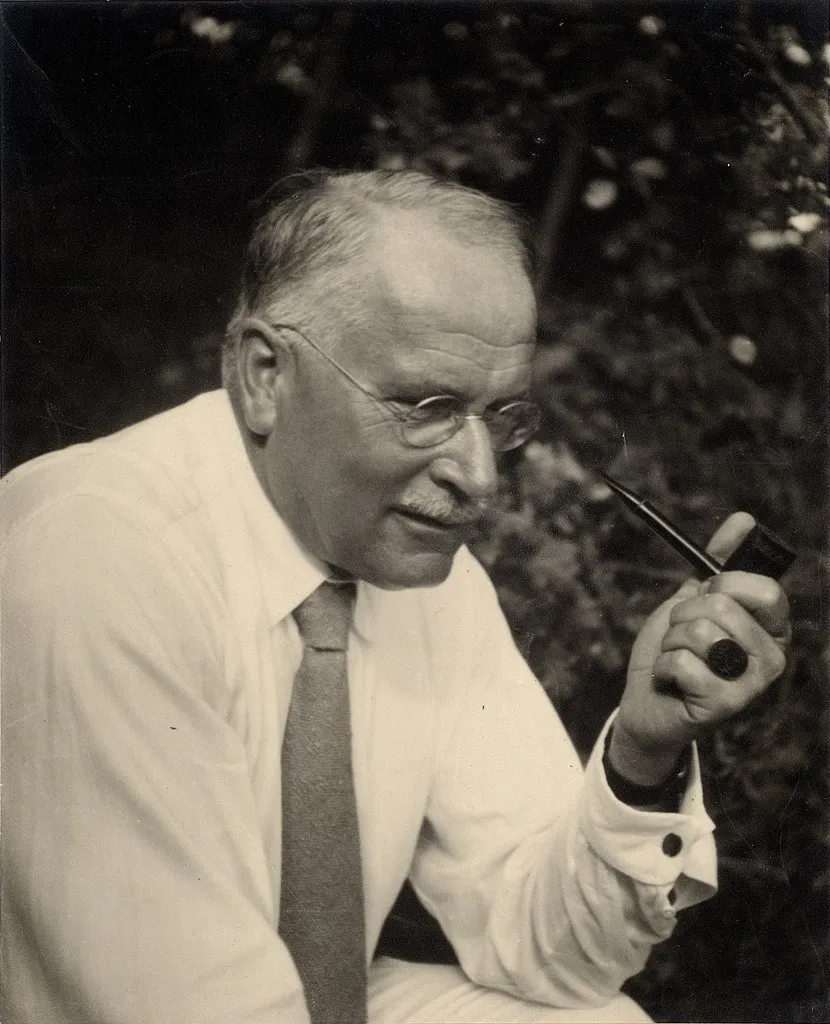
Different bird species correspond to different psychological energies. Eagles might represent the integration of spiritual awareness with earthly power—the process Jung called individuation. Ravens and crows, associated with shadow aspects of the psyche, can symbolize necessary encounters with the unconscious mind. Doves, with their associations of peace, might represent the resolution of internal conflict.
Contemporary art therapy often utilizes bird imagery for its psychological power. Creating or contemplating bird art can help individuals process emotions related to freedom, transcendence, and spiritual connection. The universal nature of bird symbolism makes it accessible across cultural backgrounds, while still allowing for personal interpretation and meaning-making.
Reading the Painted Feathers: How to Interpret Birds in Art
When encountering birds in paintings, several interpretative strategies can help uncover their meaning. First, identify the species if possible—different birds carry distinct traditional associations. A peacock in a Renaissance painting likely references immortality and resurrection, while a raven might suggest prophecy or connection to the divine in Native American art.
Consider the historical and cultural context. Birds in 17th-century Dutch still life paintings often carried moral messages about wealth and mortality, while birds in Chinese landscape paintings frequently suggested harmony with nature and longevity wishes. Understanding the artist’s tradition helps decode their visual language.
Notice the bird’s position and relationships within the composition. Is it caged or free? Perched near a specific character? Flying toward or away from a light source? These spatial relationships often communicate subtle narrative elements and emotional tones. A bird flying upward might suggest spiritual ascension, while a bird in a cage could represent imprisoned spirit or lost freedom.
Color symbolism adds another layer of meaning. White doves suggest purity and peace, while red cardinals might evoke passion or sacrificial themes. Dark birds often connect to mystery, the unconscious, or transitional states. These color associations cross-pollinate with the bird’s inherent symbolism to create rich interpretative possibilities.
Questions to Ask When Viewing Birds in Paintings
When you encounter birds in artwork, consider asking these guiding questions to deepen your understanding:
- What species is depicted, and what are its traditional associations in the artist’s culture?
- How does the bird interact with human figures or other elements in the composition?
- What is the historical context of the artwork, and how might contemporary religious or philosophical ideas inform the bird symbolism?
- Are there specific narratives (biblical, mythological, literary) being referenced through the bird imagery?
- How does the artistic treatment of the bird (realistic, stylized, abstract) affect its symbolic impact?
These questions provide starting points for dialogue with the artwork, allowing for both traditional and personal interpretations. Remember that symbols often carry multiple meanings simultaneously—a complexity that enriches rather than confuses their power.
Famous Paintings and Their Avian Messengers
Hieronymus Bosch’s “Garden of Earthly Delights” (c. 1490-1500) presents a phantasmagoria of bird imagery, from realistic species to fantastic hybrids. In the left panel’s Paradise scene, birds represent God’s benevolent creation, while in the central panel, they transform into symbols of sensual pleasure and temptation. The right panel’s hellish landscape features bird-demons enacting punishment—a dramatic visual sermon on spiritual consequences.
Hans Holbein’s “The Ambassadors” (1533) includes subtle bird symbolism amid its famous memento mori elements. The lute with broken string features decorative birds that suggest harmony disrupted by mortality, complementing the painting’s theme of worldly accomplishment shadowed by death’s inevitability.
Vincent van Gogh’s “Wheatfield with Crows” (1890), painted shortly before his death, uses ominous black birds swooping across a turbulent sky to create a mood of psychological intensity. Art historians debate whether these crows represented van Gogh’s premonition of death or simply his observation of nature’s dramatic aspects. Either interpretation recognizes the emotional power of birds as harbingers of fate.
Frida Kahlo incorporated birds into many self-portraits as expressions of her emotional state. In “Self-Portrait with Thorn Necklace and Hummingbird” (1940), the dead hummingbird hanging from her neck suggests sacrificed freedom and vitality—a poignant reflection of her physical suffering and emotional pain. Here, bird symbolism becomes intensely personal while drawing on traditional Mexican associations between hummingbirds and warrior spirits.
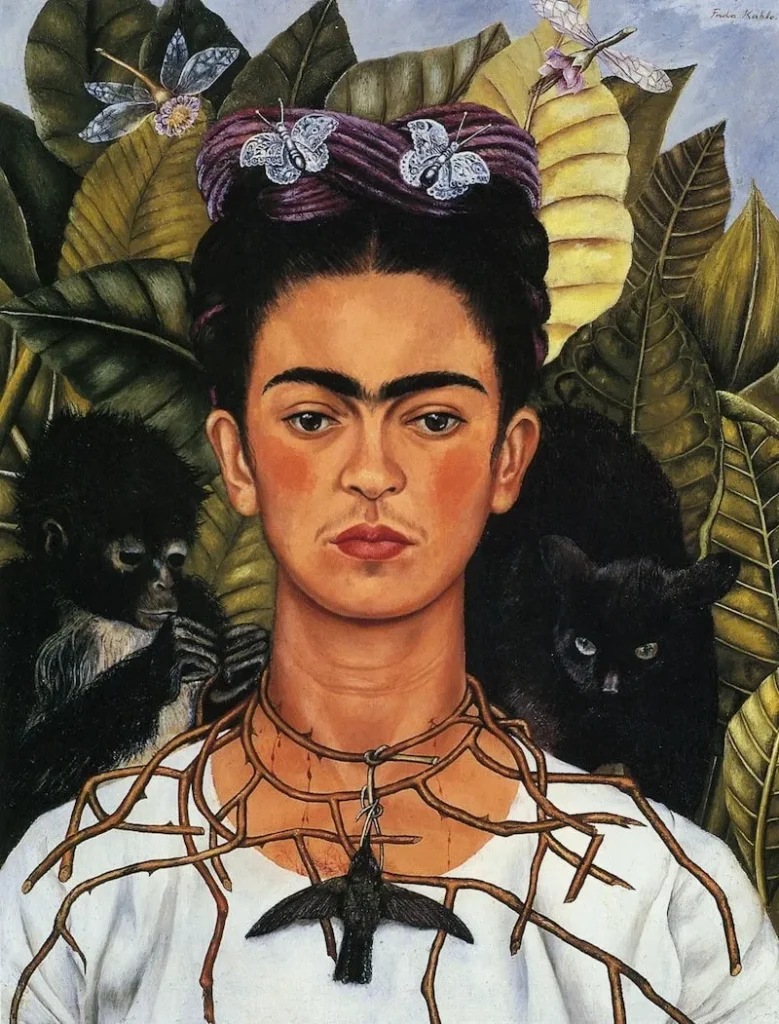
Contemporary Artists and Bird Symbolism
Contemporary artists continue to draw on bird symbolism while reinterpreting it for current concerns. Environmental artists like Andy Goldsworthy create ephemeral works using feathers and other natural materials, highlighting birds’ connection to ecological systems and environmental fragility. His installations with feathers arranged in circles and spirals evoke birds’ flight patterns while speaking to natural cycles of growth and decay.
Digital artists exploring spiritual themes frequently incorporate bird imagery as symbols of transcendence in technological contexts. Artists working in virtual reality might create immersive experiences where users “become” birds, exploring ancient shamanic themes of transformation through cutting-edge technology.
Indigenous contemporary artists often reclaim traditional bird symbolism as expressions of cultural resilience and spiritual continuity. Norval Morrisseau’s vibrant paintings feature thunderbirds and other avian beings from Anishinaabe spiritual traditions, creating bridges between ancestral wisdom and contemporary artistic expression.
Meditative Practice: Connecting with Bird Symbolism in Art
Engaging with bird symbolism in art can become a form of spiritual practice itself. Try this simple visualization: Find a painting featuring birds that resonates with you. Sit comfortably and breathe deeply, allowing your focus to rest on the bird within the artwork. Imagine yourself taking on qualities of this bird—perhaps the eagle’s clear vision, the dove’s peaceful presence, or the phoenix’s capacity for renewal.
For deeper exploration, keep a journal of bird encounters in both art and daily life. Notice which species appear repeatedly in the artwork you’re drawn to, and research their traditional symbolic meanings across cultures. Consider how these bird energies might relate to your current life circumstances and spiritual journey.
Creating your own bird-inspired art can also be powerfully transformative. Even simple sketches or collages focusing on birds that hold meaning for you can help externalize inner wisdom and intuitive knowledge. This creative process honors the ancient tradition of using bird imagery as a bridge between visible and invisible realms.
The Spiritual Practice of Birdwatching in Art
Just as birdwatchers in nature develop patience and attentiveness, “birdwatching” in art galleries cultivates similar contemplative qualities. When you visit museums, challenge yourself to notice birds in paintings you might otherwise overlook. These small details often hold keys to deeper meaning within the artwork.
This practice becomes a form of visual meditation, training your attention to notice subtle details and symbolic patterns. As you develop this awareness in art settings, you might find it extending to daily life—noticing birds and their messages in your environment with greater frequency and appreciation.
Many spiritual traditions suggest that birds appearing at significant moments carry messages from divine or ancestral realms. By sensitizing yourself to bird symbolism through art, you create receptivity to these natural messengers in your own experience. The boundaries between art appreciation and spiritual practice blur, creating a rich territory for personal exploration and meaning-making.
Final Reflections: The Timeless Message of Wings
Throughout history and across cultures, birds in art have embodied humanity’s spiritual aspirations and questions. Their ability to soar between earth and sky makes them perfect symbols for the soul’s journey and our desire for transcendence. From ancient cave paintings to contemporary digital art, birds continue to fascinate artists and viewers alike.
Perhaps birds endure as compelling symbols precisely because they represent what humans cannot physically do—effortlessly rise above earthly constraints. In their freedom, we see our spiritual potential; in their migrations, we recognize our own soul journeys.
The next time you stand before a painting with birds—whether a medieval religious scene, a Chinese landscape scroll, or a contemporary installation—pause to consider the multiple layers of meaning these winged messengers might carry. They stand as bridges between worlds, inviting us to cross with them into deeper understanding of both art and our own spiritual nature.
As you continue your journey through art galleries, nature, and daily life, may you encounter birds with fresh eyes—seeing in them not just beautiful creatures, but ancient and continuing symbols of the human spirit’s endless flight toward meaning, connection, and transcendence.
Suggested Artwork to Explore
- The Goldfinch by Carel Fabritius (1654) – A simple yet profound painting of a chained pet goldfinch that inspired Donna Tartt’s novel.
- The Garden of Earthly Delights by Hieronymus Bosch (c. 1490-1500) – A complex triptych filled with symbolic birds representing spiritual states.
- Peacock Room by James McNeill Whistler (1876-77) – An immersive installation featuring stylized peacocks as decorative and symbolic elements.
- Black Birds by Norval Morrisseau (1975) – A vibrant contemporary expression of Indigenous bird symbolism.
- The Holy Trinity with the Virgin and Saint John and Donors by Masaccio (1425) – Features the Holy Spirit as a dove in classical Renaissance composition.
FAQ
What does a bird symbolize in Renaissance art?
In Renaissance art, birds often carry specific theological meanings. Doves represent the Holy Spirit, goldfinches symbolize Christ’s passion and redemption, and peacocks signify immortality and resurrection (see also the meaning of a dead peacock) (see also the meaning of a dead peacock). Artists like Botticelli and van Eyck used precisely rendered birds to convey spiritual concepts within naturalistic settings.
What is the meaning of birds in modern art?
Modern artists use birds to explore psychological states, environmental concerns, and personal mythology. From Picasso’s peace doves to Frida Kahlo’s emotional self-portraits with birds, these symbols have evolved to address contemporary spiritual questions while maintaining connections to ancient symbolic traditions.
